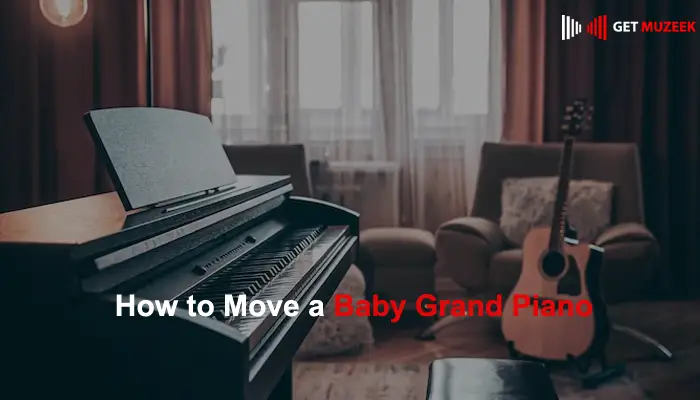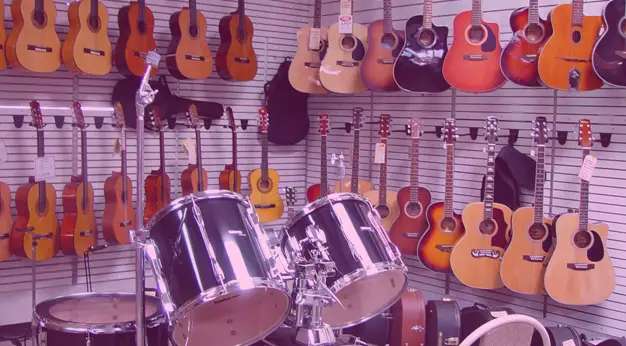
Moving a baby grand piano can be a daunting task, requiring careful planning, preparation, and execution. As a valuable and delicate musical instrument, a baby grand piano demands special attention to ensure its safety during the moving process.
In this comprehensive guide, we will provide you with step-by-step instructions, expert tips, and essential precautions to successfully move your baby grand piano without causing any damage. So, let’s dive right in and learn how to move a baby grand piano with ease!
How to Move a Baby Grand Piano
Moving a baby grand piano requires meticulous planning and execution to ensure its safety and protection. Follow these detailed steps to move your precious instrument without any hassle:
- Assess the Situation: Before embarking on the moving process, evaluate the layout of your home, both the current and destination locations of the piano, and any potential obstacles or challenges that may arise during the move.
- Gather the Necessary Tools: To successfully move a baby grand piano, you’ll need a set of essential tools, including a piano dolly or skid board, moving blankets or pads, straps or ropes, a toolbox, and a furniture dolly.
- Measure Doorways and Staircases: Measure all doorways, hallways, and staircases involved in the moving process. Ensure that the piano can fit through without any difficulties or the need for disassembly.
- Secure the Lid and Keyboard: Close and secure the lid of the baby grand piano, ensuring it is tightly fastened. Lock the keyboard lid to prevent any accidental openings during the move.
- Remove the Piano Legs: Start by removing the piano legs or securing them with protective covers. This step will reduce the overall size and make the piano easier to handle and transport.
- Cover the Piano: Protect the baby grand piano from scratches, dents, and dust by covering it with moving blankets or pads. Secure the blankets in place with straps or ropes to prevent any movement during transportation.
- Prepare the Piano Dolly or Skid Board: Set up the piano dolly or skid board and ensure it is sturdy and secure. Place the dolly or skid board in a position that allows for easy maneuverability during the moving process.
- Enlist the Help of Professionals: Moving a baby grand piano is a complex task that requires specialized skills and expertise. Consider hiring professional piano movers who have experience in handling and transporting delicate instruments like the baby grand piano.
- Use Proper Lifting Techniques: When lifting the piano onto the dolly or skid board, make sure to bend your knees, keep your back straight, and use your leg muscles to lift the piano. Avoid putting excessive strain on your back and seek assistance if needed.
- Secure the Piano to the Dolly or Skid Board: Once the piano is on the dolly or skid board, secure it firmly using straps or ropes. Double-check the stability and ensure that the piano is well-balanced to avoid any tipping or shifting during transportation.
- Navigate Staircases with Caution: If you encounter staircases during the move, take extra precautions. Utilize additional manpower and use sturdy ramps or lifting straps to carefully transport the piano up or down the stairs.
- Load the Piano Safely: When loading the piano onto a moving truck or vehicle, ensure that it is positioned securely and surrounded by padding and other protective materials. Avoid stacking any heavy objects on top of the piano to prevent damage.
- Drive with Care: If you are transporting the piano yourself, drive cautiously and avoid sudden stops, sharp turns, or bumpy roads. Drive at a moderate speed to minimize vibrations and ensure a smooth ride for the piano.
- Unload and Position the Piano: Upon reaching the destination, unload the piano carefully and place it in its designated spot. Follow the reverse steps of loading, making sure to use proper lifting techniques and secure the piano during the process.
- Reattach the Piano Legs: If you removed the piano legs earlier, now is the time to reattach them securely. Ensure that each leg is properly aligned and tightened to provide stability to the baby grand piano.
- Tune the Piano: After the piano is settled in its new location, schedule a professional tuning to restore its optimal sound quality. Changes in temperature and humidity during the move can affect the piano’s tuning.
- Inspect for Damage: Conduct a thorough inspection of the piano to check for any potential damage that may have occurred during the move. Look for signs of scratches, dents, or other issues that may need attention.
- Keep the Piano Climate-Controlled: Maintain a stable and climate-controlled environment for your baby grand piano. Fluctuations in temperature and humidity can adversely affect the instrument’s sound and overall condition.
- Consider Professional Restoration: If your baby grand piano sustained significant damage during the move, consult with professional piano technicians to assess the extent of the damage and discuss potential restoration options.
- Enjoy Your Piano: Once the moving process is complete, take a moment to appreciate your baby grand piano in its new location. Sit back, relax, and create beautiful music with your beloved instrument!
FAQs
Can I move a baby grand piano by myself?
While it’s possible to move a baby grand piano by yourself, it is highly recommended to hire professional piano movers who specialize in moving delicate instruments. Their experience and expertise will ensure the safety of your piano.
How much does it cost to move a baby grand piano?
The cost of moving a baby grand piano varies depending on several factors, such as the distance of the move, the complexity of the route, the size of the piano, and any additional services required. It is advisable to request quotes from multiple moving companies to compare prices.
Should I disassemble my baby grand piano before moving it?
Disassembling a baby grand piano is a complex task best left to professionals. It requires specialized knowledge and tools to dismantle and reassemble the instrument without causing damage. Consult with piano movers who can assess whether disassembly is necessary.
Can I use regular furniture movers to move a baby grand piano?
Regular furniture movers may lack the expertise and equipment needed to move a delicate and heavy instrument like a baby grand piano. It is recommended to hire specialized piano movers who have experience in handling pianos and ensuring their safety during transport.
What if my new home has narrow doorways or tight spaces?
If your new home has narrow doorways or tight spaces that pose challenges for moving the piano, consult with professional piano movers. They can assess the situation and determine the best approach, which may include disassembly or alternative routes.
How often should I tune my baby grand piano after the move?
After the move, it is advisable to schedule a professional tuning for your baby grand piano. Changes in temperature and humidity during the move can affect the instrument’s tuning. Regular tuning, typically twice a year, will help maintain its optimal sound quality.
Conclusion
Moving a baby grand piano requires careful planning, the right tools, and expertise to ensure a smooth and safe process. By following the detailed steps provided in this guide, you can confidently move your baby grand piano to its new location without risking any damage.
Remember, it’s always recommended to enlist the help of professional piano movers for a hassle-free and secure move. So, start planning, gather the necessary resources, and enjoy the beautiful melodies of your baby grand piano in its new home!
Related Posts:
- How to Play G on the Piano
- How to Play Wake Me up Avicii Guitar Chords
- How to Play Hallelujah Chords Guitar: A Comprehensive Guide
- How to Play Eight Days a Week Chords
- How to Play Taylor Swift “You Belong With Me” Chords



